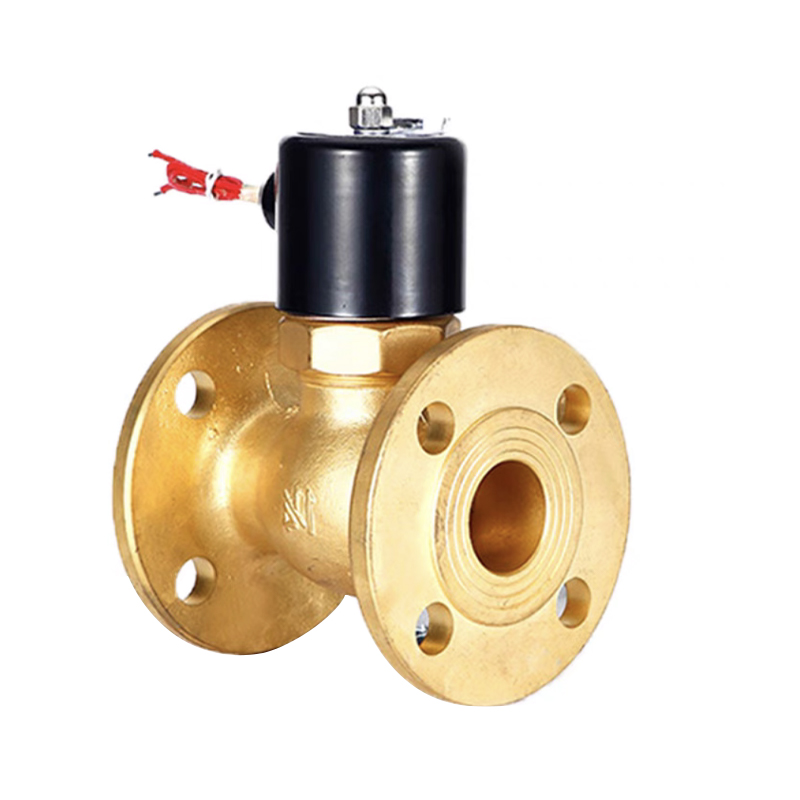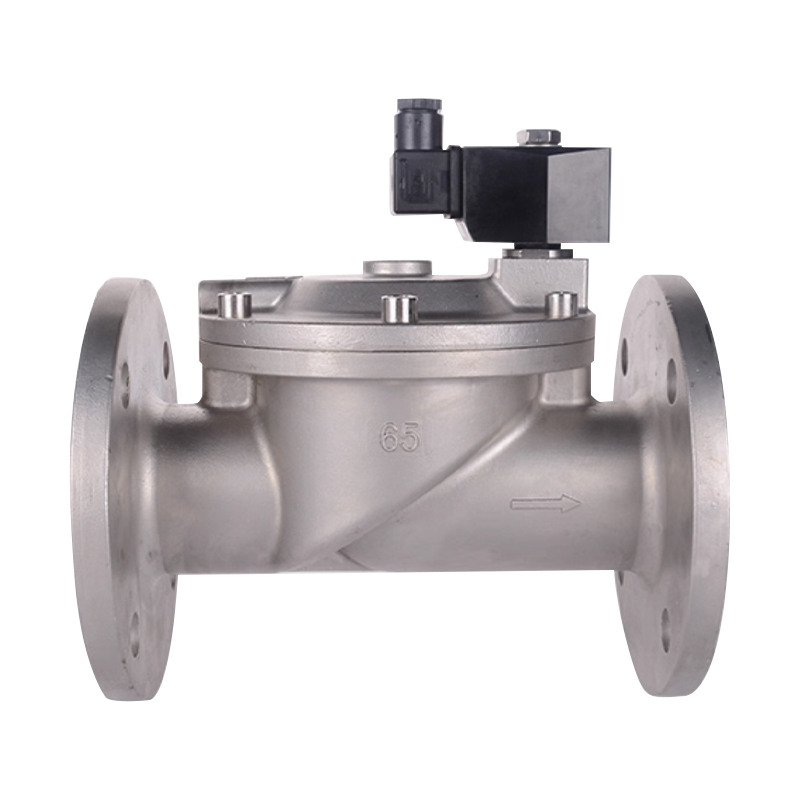Industry knowledge
Flange standards, bolt patterns and practical selection tips
When specifying a flanged solenoid valve for retrofit or new installations, matching the flange standard (ANSI/ASME, DIN, JIS, EN) and the exact bolt-hole pattern is the first practical step to avoid field rework. Beyond nominal pipe size, confirm the raised-face vs. flat-face detail, bolt circle diameter, number of bolts and bolt size — these determine gasket compression behavior and how the valve will distribute flange load. In practice measure the flange face-to-face and flange thickness if possible; mismatches in thickness can create bending moments on the valve body and accelerate gasket failure. We always advise clients to provide a flange drawing or photo — that small step saves hours onsite.
Gasket selection and torque patterns for reliable sealing
Gasket material must be chosen by chemical compatibility, temperature and the flange finish. For steam and high-temperature fluids, compressed graphite or spiral-wound gaskets are common; for water and neutral fluids PTFE or filled PTFE may be preferable. Equally important is the bolt torque pattern: use a star or criss-cross sequence and incremental torque stages (e.g., 30%, 60%, 100%) to achieve even compression. Under-torquing leads to leaks; over-torquing can extrude or compress the gasket beyond its elastic limit. When valves will be removed frequently, consider a slightly lower torque combined with a gasket designed for higher relaxation resistance. We design our valves and recommend specific torque ranges with each flange kit to simplify commissioning.
Sizing flanged solenoid valves: Cv, pressure drop and pilot considerations
Correct sizing requires computing the required Cv from the desired flow at the operating pressure differential. For pilot-operated flanged solenoid valves, remember the valve’s pilot stage needs sufficient differential to operate; specifying a pilot-operated valve close to its minimum ΔP can lead to sluggish operation or failure to shift. When space or ΔP is limited, a direct-acting flanged valve may be better despite typically lower maximum Cv. Always check how viscosity and temperature change fluid density — these change the hydraulic calculations. If you send us the operating point (flow, inlet pressure, outlet pressure, temperature), we can help confirm Cv and suggest whether a pilot or direct unit is the best fit.
Electrical coil management: duty cycle, inrush, and thermal limits
The electromagnetic coil is the most temperature- and duty-sensitive part. Continuous-duty coils (100% ED) can be energised indefinitely within rated ambient and enclosure conditions; intermittent-duty coils require cooling intervals. Pay attention to inrush current when multiple valves are energised simultaneously — the coil inrush can trip local breakers even when steady-state current is low. Use undervoltage protection, proper fusing and, where space allows, soft-start circuits for large valve banks. Coil temperature rise must also be considered where ambient exceeds standard ratings; if the valve sits inside an enclosure with poor ventilation, spec a higher insulation class or forced cooling. We include coil duty guidance in our datasheets because correct coil choice extends service life dramatically.
Mounting orientation, support and vibration mitigation for long life
Flanged solenoid valves are often robust, but improper mounting shortens life. Support the piping so the valve body is not carrying pipe weight or axial loads — use pipe shoes or brackets. Orient the valve so any internal drains or vent points work with gravity; pilot lines should avoid siphons and traps. In high-vibration environments (compressor skids, pump rooms) use anti-vibration mounts or flexible connectors to protect internal pilot tubing and electrical connections. Where possible, avoid mounting the actuator directly below heavy piping; repeated stress cycles on the flange fasteners can loosen joints. We design our flanged bodies with dedicated lifting and support points to make correct installation intuitive.
Smart valve integration: sensors, feedback and communication strategies
Modern flanged solenoid valves can be more than on/off devices — they can be control nodes. Typical useful sensors include coil current monitoring (detects short/open coils and stuck plunger), differential pressure taps (to detect clogging or seat leakage), and position sensors or reed switches for valve state confirmation. For systems with many valves, bus communication (Modbus, CANopen, ProfiNet) reduces wiring complexity and enables centrally logged diagnostics. Design choices: use local edge logic for safety-critical sequencing, and send diagnostic telemetry upstream for predictive maintenance. When integrating, ensure grounding and cable segregation for the communication cables to avoid EMI from coil switching. We embed sensing-ready ports and standard comms on our smart valves so you can add condition monitoring without reworking the piping.
Maintenance intervals, common failure modes and quick field checks
Typical maintenance intervals depend on fluid cleanliness, cycle rate and environment — high-cycle pneumatic systems may need inspection monthly, while clean water systems can often be checked quarterly. Common failure modes: coil burnout (over-voltage or poor cooling), pilot line blockage (debris or scale), seat wear causing leakage, and flange gasket failure. Quick field checks include: measuring coil DC or AC resistance to detect shorted turns; confirming coil voltage under load; blowing back pilot lines to check for obstruction; and performing a leak-down test across the seat at a reduced pressure. Keep a simple log of cycle counts and any abnormal actuation times — changes in response time often precede mechanical failure.
Material selection and corrosion resistance for harsh environments
Valve body and internal trim materials must be matched to the fluid chemistry and ambient conditions. Stainless steels (304, 316) are common for corrosion resistance; duplex stainless offers higher strength and chloride resistance for seawater. For very aggressive media consider exotic alloys or linings; however these add cost and can complicate flange gasketing. External corrosion protection (paints, powder coats, or metallic platings) combined with sacrificial anodes on nearby structures reduces ambient corrosion. When in doubt, specify material and a corrosion allowance in the procurement spec. We frequently provide tailored material options so the valve lifecycle matches your process expectations.
Troubleshooting table: symptoms, probable causes and immediate actions
| Symptom |
Probable cause |
Immediate action |
| Valve fails to open |
No coil voltage / burnt coil / blocked pilot |
Verify voltage, measure coil resistance, blow pilot lines |
| Valve leaks when closed |
Seat damage, foreign particles, improper seating pressure |
Isolate and inspect seat, perform seat lapping or replace trim |
| Intermittent actuation |
Loose electrical connection or vibration-related cable damage |
Inspect and secure wiring, use strain reliefs |
Commissioning checklist for flanged solenoid valves
- Verify flange standard, gasket type and bolt grade match the specification before bolting up.
- Perform a dry electrical check: coil resistance, polarity, and control-signal verification.
- Check pilot lines for cleanliness and orientation; pressurise pilot circuit and confirm proper actuation at the expected ΔP.
- Run a controlled functional test at operational pressure and log actuation times and any chatter or delayed movement.
- Record baseline coil current and leakage measurements for future diagnostic trending.
Final practical notes on spare parts and lifecycle planning
Keep a small set of common spares (coils, gaskets, pilot filters, and a spare seat kit) matched to the most critical flanged solenoid valves in the plant. Track actuation cycles and schedule proactive seat replacement before leakage occurs — the cost of an unplanned shutdown usually dwarfs spare-part inventory costs. If you want, we can prepare a spare-parts kit and a simplified lifecycle plan tailored to your valve population; we built our aftermarket kits exactly for that use case.



 English
English Español
Español








